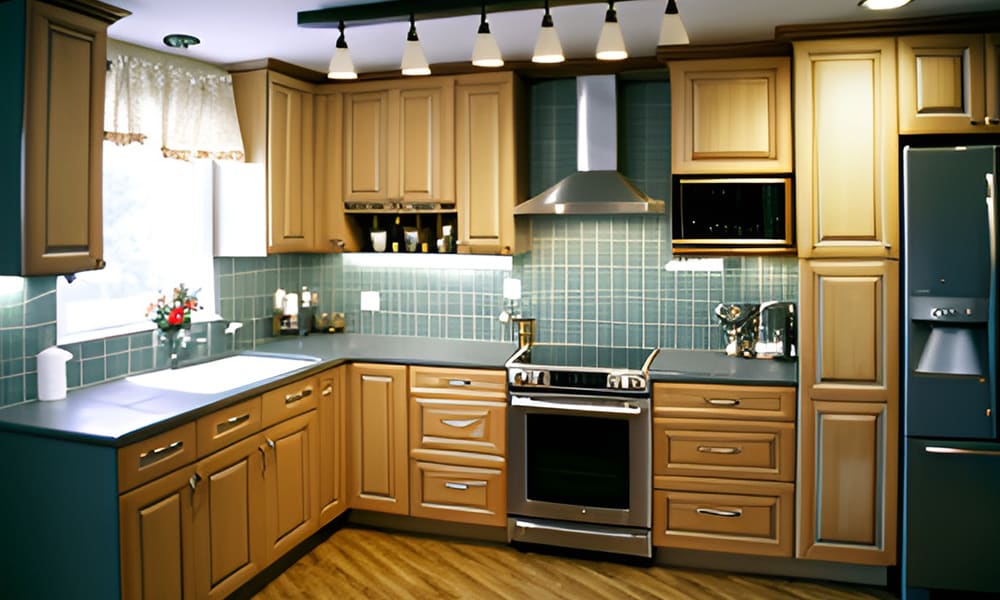Revamp Your Kitchen: The Ultimate Remodeling Guide
A kitchen renovation can dramatically improve how you live and boost your home's value. This comprehensive guide covers planning, layout choices, material selection, budgeting, and timelines to help you navigate a kitchen remodel with confidence. Learn about cabinetry, countertops, appliances, flooring, and the true costs and trade-offs so you can design a functional, stylish kitchen that fits your needs and budget.

Key Elements of a Full Kitchen Remodel
A full kitchen renovation typically touches several major components: cabinetry, countertops, appliances, flooring, lighting, and plumbing fixtures. Cabinets often account for the largest share of the budget — generally around 30 to 35 percent — while appliances and countertops commonly represent roughly 15 to 20 percent each. If you plan to reconfigure the layout, moving plumbing or electrical lines will add cost and complexity, so factor that into your planning early.
Layouts and Design Principles
The classic kitchen work triangle — the path between sink, stove, and refrigerator — remains a useful guide for efficient design. Common layouts include L-shaped, U-shaped, galley, and island-based kitchens. Choose a plan that matches how you cook and entertain: a family that hosts often may prefer an island with seating and a prep sink, while a serious home cook might value dedicated cooking and prep zones. Charging stations, pull-out pantries, and task-specific areas are modern additions that improve functionality.
Choosing Materials and Finishes
Material selection should balance looks, durability, and maintenance. Countertops offer many choices: granite and quartz are durable and popular, butcher block provides warmth and easy repairs, and stainless steel suits an industrial aesthetic. Flooring should be water-resistant and simple to maintain; top picks include porcelain tile, luxury vinyl plank, and hardwood (engineered or solid). Cabinet construction options include solid wood, MDF, and plywood, each with different price points and longevity; finishes and hardware let you customize style and usability.
Cost Breakdown and Budgeting
Costs differ by region and project scope, but a typical component breakdown looks like this:
| Component | Basic Range | Mid-Range | Luxury Range |
|---|---|---|---|
| Cabinetry | $5,000-10,000 | $15,000-30,000 | $35,000+ |
| Countertops | $2,000-4,000 | $4,000-8,000 | $8,000+ |
| Appliances | $8,000-12,000 | $15,000-30,000 | $40,000+ |
| Labor | $5,000-10,000 | $10,000-20,000 | $25,000+ |
| Flooring | $1,500-3,000 | $3,000-7,000 | $8,000+ |
Prices, rates, or cost estimates mentioned in this article are approximate and may change over time. Independent research is advised before making financial decisions.
When setting a budget, prioritize the elements that matter most to daily use and resale value. Cabinets and durable countertops usually offer the best balance of long-term satisfaction and return on investment. Always include a contingency (10 to 20 percent) for unexpected conditions uncovered during demolition.
Timeline and Managing the Project
Most kitchen remodels run between six and twelve weeks, depending on the extent of structural changes and lead times for ordered items. Typical phases include demolition, rough-ins for mechanicals (plumbing, HVAC, electrical), cabinet installation, countertop templating and installation, appliance hookup, and finishing touches such as trim and paint. Create a detailed schedule with your contractor and confirm delivery windows for cabinetry and countertops to avoid delays.
Plan for temporary kitchen solutions if your existing kitchen will be out of service for several weeks: a mini fridge, microwave, portable cooktop, and a dishwashing plan will keep day-to-day life manageable. Good communication and a lead contractor who coordinates subcontractors (electricians, plumbers, tile setters, finish carpenters) are essential to keep the project on time.
Practical Tips for Decision-Making
- Start with a clear list of must-haves vs. nice-to-haves to guide tradeoffs between design and cost.
- Get multiple bids and check references; real-world examples and walkthroughs of past projects reveal a contractor’s reliability.
- Consider long-term maintenance: natural stone may require sealing, certain woods can scratch more easily, and stainless steel shows fingerprints.
- Think about lighting layers — task, ambient, and accent lighting — to create a functional and attractive space.
Return on Investment and Resale Value
A thoughtfully executed kitchen renovation can enhance daily life and increase your home’s market appeal. While upgrades rarely return every dollar spent, quality cabinetry, efficient layout changes, and modern appliances tend to be the most influential on resale value. Keep trends in mind but aim for timeless finishes if resale is a near-term goal.
Final Recommendations
Remodeling your kitchen is both a practical improvement and a significant investment. Take time to research materials, set a realistic budget that includes contingency funds, and work with experienced professionals who can guide technical decisions and scheduling. With careful planning and clear priorities, you can create a kitchen that improves workflow, meets your lifestyle needs, and adds lasting value to your home.






